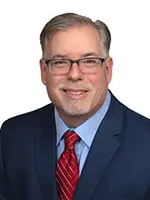Protecting The Healthcare Landscape Of 2020
08.09.2015 Terry Gaul

The Deloitte Centre for Health Solutions paints an interesting picture of the healthcare and life science sectors in their report, Healthcare and Life Sciences Predictions 2020 – a bold future? The landscape they envision is being shaped by the many scientific and technology innovations emerging today.
By 2020, they foresee an era of digitized medicine where patients manage their own electronic health records and provider and patients share crowd-sourced data via social media and other electronic communities. Today, wearable technologies have been embraced mainly by fitness buffs. But by 2020, Deloitte points to the development of new biosensors that will enable broad adoption of wearables for remote monitoring, disease management and early detection. And in the age of fully digitized medicine, Big Data will have found a way to leverage the healthcare data exposition and deliver information to patients and providers to make better and more informed decisions.
Deloitte imagines that “the convergence of biomedicine, IT, health data, wireless, and mobile will have transformed medicine from an art to a data driven science providing the right care, in the right place, at the right time and at affordable cost.”
The report presents quite an optimistic outlook, but quite plausible from Deloitte’s standpoint, based on the evidence presented. However, Deloitte also points out the many hurdles that will have to be addressed along the way. The two most prominent issues involve patient privacy and safety. While an abundance of patient data will help develop better treatments and improve outcomes, the protection of patient privacy and confidentiality is still paramount. Much more progress needs to be made in cybersecurity to provide the assurances that patient information is protected.
One area that was not addressed in detail in this particular report is the importance of protecting not only patient data, but the connected devices and embedded software themselves from malicious tampering. I like to use the example of former U.S. Vice President Dick Cheney when he acknowledged that he once feared that terrorists could use the electrical device that had been implanted near his heart to kill him and had his doctor disable its wireless function. The device in question was a defibrillator that could detect irregular heartbeats and control them with electrical jolts. Cheney had his doctor turn off the device’s wireless function in case a terrorist tried to send his heart a fatal shock.
Deloitte delved further into these type of issues in a brief entitled, Networked medical device cybersecurity and patient safety: Perspectives of health care information cybersecurity executives. The brief notes that while connected medical devices have the potential to play a transformational role in healthcare, they also may be a vehicle that exposes patients and providers to safety and cybersecurity risks such as being hacked, being infected with malware and being vulnerable to unauthorized access.
With the rapid proliferation of electronic patient data, wearables and other connected medical devices in the healthcare landscape, cybersecurity will be more important than ever. Fortunately, proven technologies exist today for protecting embedded software and connected devices from tampering and execution of malicious code.
 Read how custo med, a leading medical diagnostic company in Germany, employs Wibu-Systems’ technology to keep patient data private and protect their diagnostic cardio-respiratory acquisition and reporting system from tampering. Download the case study.
Read how custo med, a leading medical diagnostic company in Germany, employs Wibu-Systems’ technology to keep patient data private and protect their diagnostic cardio-respiratory acquisition and reporting system from tampering. Download the case study.
Contributor

Terry Gaul
Vice President Sales USA
Terry Gaul is a sales and business development professional with extensive experience in the software and technology sectors. He has been involved with software protection and licensing technologies for more than 20 years and currently serves as Vice President of Sales at Wibu-Systems USA. When he is not helping customers with software licensing, Terry typically can be found coaching his daughters' soccer teams or camping with his family on the Maine coast.








